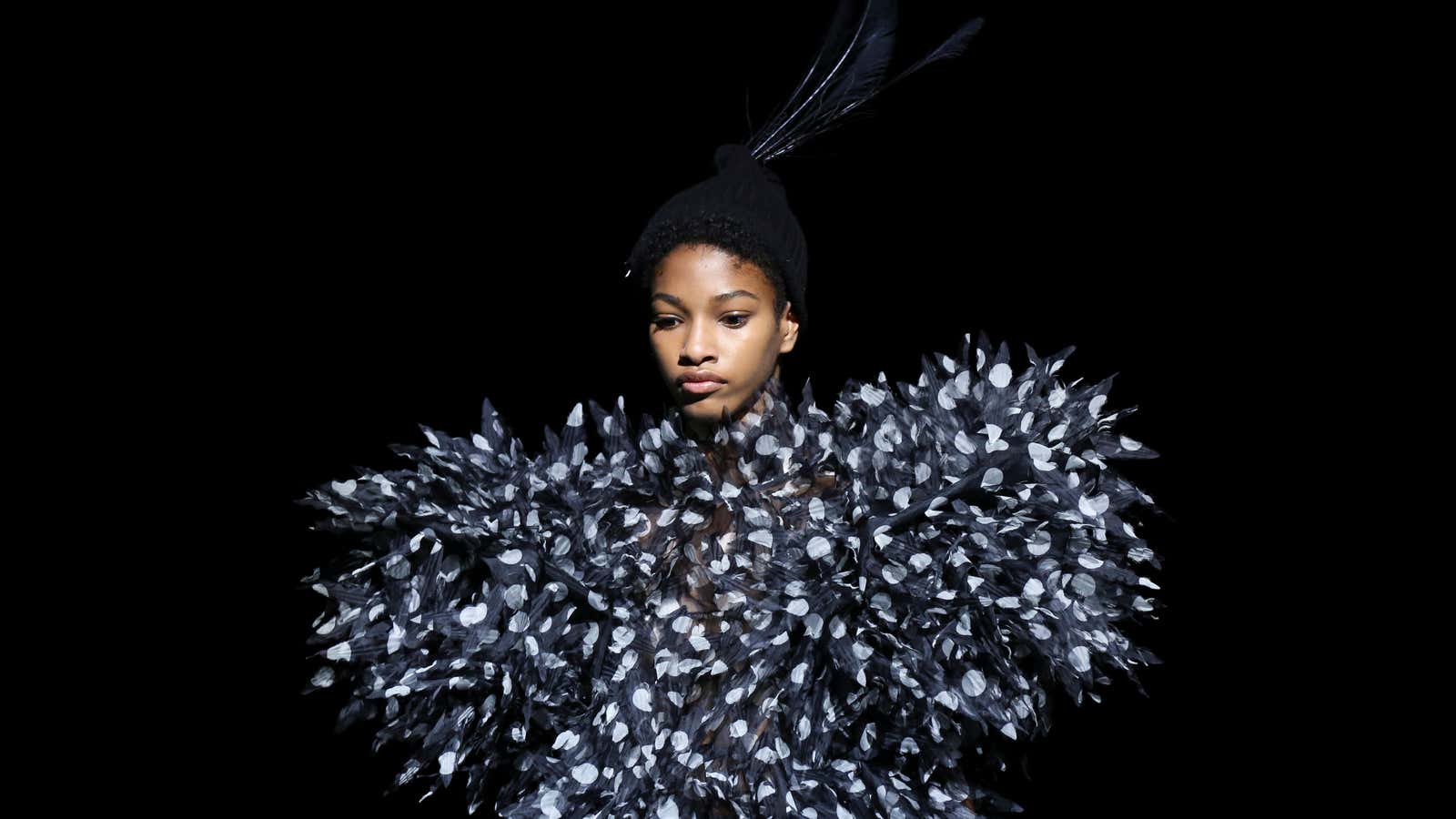Fashion shows ain’t what they used to be.
In 1918, Paris’s couture houses began holding their shows on fixed dates twice a year, laying the foundation for what would become today’s fashion weeks. A lot has changed in the intervening century, including the shows themselves. In the heydays of haute couture, they were presentations for a room of potential customers and a few others. Now they’re marketing spectacles aimed at mass audiences. Hundreds of thousands now attend fashion week shows, and millions more stream them online.
Those viewing numbers alone would suggest that fashion weeks still serve a clear purpose: to grab the attention of as many people as possible. After all, more visibility leads to more sales, right?
To a degree. But there are a variety of reasons why the equation isn’t so straightforward, and recent years have seen endless questioning about whether fashion weeks are dying, and what purpose they now serve.
Fashion week is dead. Long live fashion week.
“In a world that has become increasingly immediate, the current way of showing a collection four months before it is available to consumers is an antiquated idea and one that no longer makes sense,” designer Tom Ford told WWD in 2016 (paywall). “We have been living with a fashion calendar and system that is from another era.”
He wasn’t exaggerating. The fashion calendar itself is based in a system that emerged in the latter half of the 19th century with couturiers such as Charles Fredrick Worth, who once a season used live models to present a variety of designs for interested clients to choose from. Before that point, designers made their clothes to order. (An aggressive self-promoter, Worth also pioneered the practice of designers putting their names into their garments.)
This innovation led to the cycle of seasonal collections that came to define designer fashion: Brands showed their collections to buyers—which have since become mostly retailers rather than individuals—and then produced the clothes they sold. It took several months for runway looks to hit store racks. All the while, magazines were the main avenue for the general public to see these latest designs, making editors the ones designers had to impress to get their work in front of a wide audience. Runway shows were a matter of public interest, but their main audiences were those editors and store buyers.
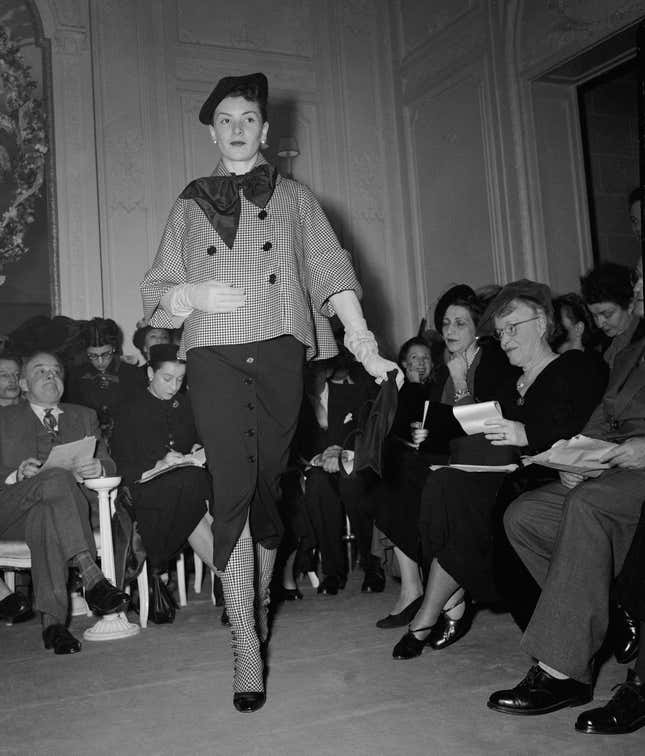
This way of working still exists, but it has arguably lost step with a world where everything is instantly visible on social media, where brands can use their websites to bypass store partners and sell straight to shoppers themselves, and where shoppers have become accustomed to the constant stream of new products that fast fashion popularized. These forces have transformed the fashion industry.
Instagram, for example, unlike fashion weeks, created a constant line of connection between brands and their customers, so powerful it has reshaped the way brands work and communicate. Even runway shows have become subservient to it, manufacturing Instagrammable moments. Fast fashion, meanwhile, helped create an expectation among consumers that there will always be new fashion to buy. Zara alone releases 500 new designs a week (paywall) on average.
Served with a steady diet of endless novelty, shoppers have grown less apt to wait months after a runway show to purchase a limited number of key pieces at the beginning of a retail season, when the actual season may not even yet be suitable for the item. Fall-winter items can arrive in stores at the end of summer, meaning heavy coats may sit on racks for months before it’s cold enough for shoppers to think about them. Instead, more consumers are shopping constantly and for the moment. Seasonal fashion collections and shows to promote them can feel like lingering holdovers.
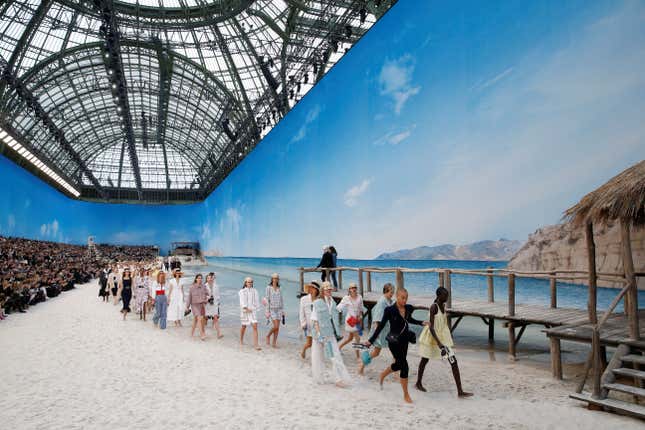
Still, fashion shows as a format, and the fashion weeks that organize them, aren’t disappearing. On the contrary, more are happening than ever. Cities beyond the big four of Paris, Milan, London, and New York have created their own events, including Shanghai, Seoul, and Tbilisi. Brands are adding shows beyond the traditional spring and fall offerings. Labels large and small eagerly join these schedules because of the prestige and exposure involved.
At what cost?
These shifts have raised questions about how relevant expensive, occasional events are in an era when the way people shop and connect with brands has so drastically changed. It can be difficult for designers, particularly smaller ones, to determine whether the returns they see are worth the often exorbitant costs of a show that actually captures people’s attention.
Designer Christian Siriano, for instance, provided a breakdown of his show costs for Vogue Business that could reach up to $300,000 once the price of models, set design, lighting, sound, and all the other elements were tallied. “I think when our investors go through the numbers, it’s really hard for them to see actual returns,” he said. “Obviously, there are ways to tell if a collection is more successful than another, but that doesn’t necessarily have to do with the show. It has more to do with the timing, or the fabrications we’re using or what’s happening with the seasons.”
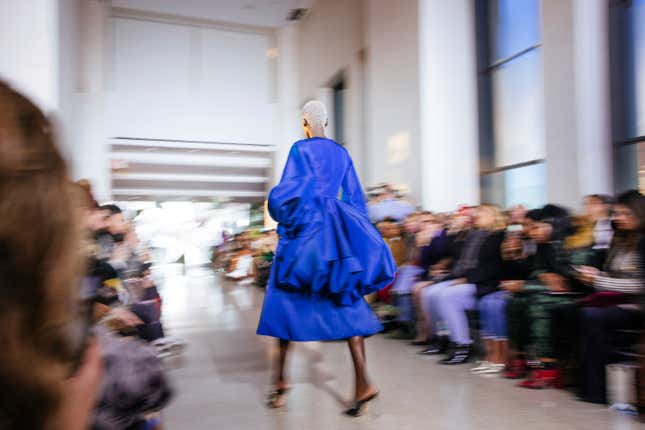
Six-figure tabs tend to be typical for staging a show at a major fashion week, and can run far higher. In 2011 the New York Times reported a cost of $1 million for a show by Marc Jacobs. But store buyers don’t make their purchases at the shows themselves. They attend showroom appointments where they can see and feel the clothes up close and get information on the options available, such as alternative colors or fabrications.
The mushy correlation between shows and financial return is also evident in the fact that pre-fall collections can be the most lucrative for labels that offer them. “That’s because like resort (another made-up season), pre-fall stays on retailers’ racks for much longer than the fall and spring collections,” Quartz’s Jenni Avins explained. These collections often don’t get runway shows. Instead many brands reveal them in photographed presentations.
If the best mix of reach and cost-effectiveness is what brands are after, the best tool at their disposal is likely Instagram.
Brands have responded to these issues in various ways, including by leveraging their own sales channels. Some have tried to make products available immediately after shows in their stores or websites to translate the excitement around the runway directly into sales, rather than risk that excitement cooling as shoppers wait months for products to hit racks. But that route has failed to offer the revolution some in fashion hoped it might. Others have taken to regularly dropping new items between runway shows, as labels such as Gucci and Balenciaga have done (paywall).
But in that environment, why bother with the pricey show at all?
So what’s a fashion week for?
The short answer is, of course, marketing. There’s probably no better way for fashion labels to get people to take notice than when they’re all showing their most exciting, creative work.
The more nuanced answer is that it depends on the brand, because they can have different goals in mind with their runway shows.
For many large brands, such as top luxury labels, the show can be quite literally a marketing expense incurred to sell more fragrances, accessories, and leather goods such as handbags. These brands may actually lose money producing clothes, as Exane BNP Paribas and the fashion consultancy VR Fashion Luxury Expertise have noted. But clothes and the runway shows they appear in are often valuable for branding, helping them to differentiate themselves and fueling sales of those more profitable items.
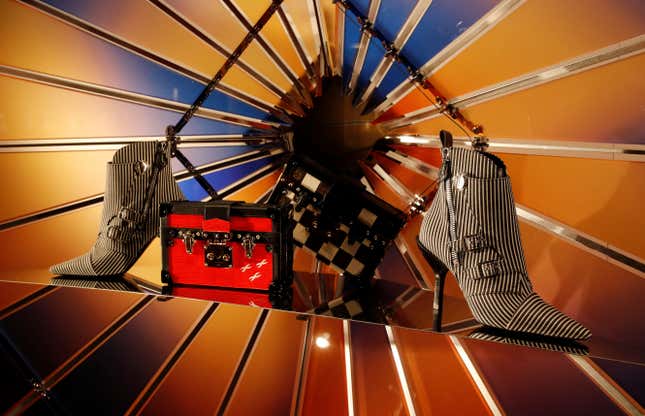
“Today shows have nothing to do with clothes anymore,” Guram Gvasalia, the CEO of Vetements, told WWD (paywall) after the brand reorganized the scheduling of its runway shows in 2017. “Most of the looks are not even produced and therefore never get to the shop floor. Shows are there merely to sell a dream that at the end of the day will sell a perfume or a wallet in a duty-free store.”
For medium and small labels, the branding opportunity of a show is also important, and there can be other benefits that come with that. Siriano told Vogue Runway that his shows, which have been lauded for their physically diverse arrays of models, have attracted other business, such as partnerships with brands including Payless. Showing at a major fashion week lends fledgling labels an air of legitimacy, too, and can put them on the radar of people in the industry. Stylists, for one, keep an eye on fashion weeks (paywall) for clothes to pull for photo shoots. A young brand’s show can land it in an editorial in a major outlet.
Fashion weeks don’t just exist for the benefit of brands either. Despite the changes that have swept the industry, they’re still important places for buyers and editors to see designers and each other. Ford, who was recently named the new chairman of the Council of Fashion Designers of America, tightened the New York Fashion Week schedule to make it more attractive (paywall) for overseas retailers and press to attend.
Don’t forget the creativity
All these business reasons are beside one fundamental point: A fashion show is one of the best opportunities a designer has to communicate a creative vision. “For me, the show is the only moment when I can tell my story,” designer Dries Van Noten once told The Independent. “It’s the way I communicate my ideas to the world.”
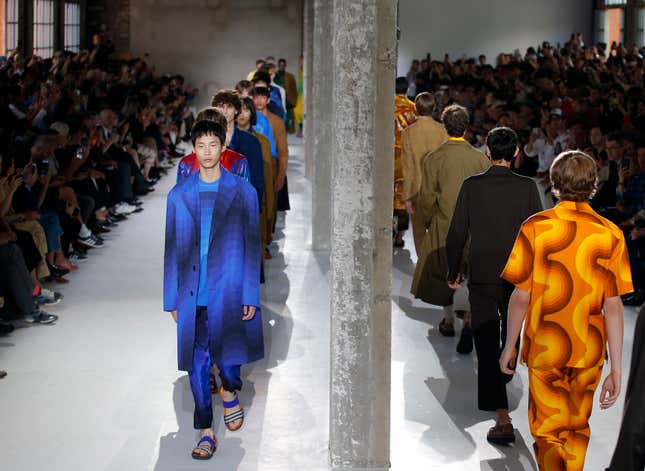
“If I couldn’t do my shows, I wouldn’t want to be in fashion,” designer Thom Browne tells author Booth Moore in her book in American Runway. “I look at my shows as my responsibility in the world of design to move design forward. I think they are such an amazing way of giving a more interesting context to fashion.”
For designers, shows at fashion weeks often feel like public unveilings that mark the culmination of all the work that went into a collection. It can be uniquely rewarding.
Speaking to W Magazine in 2014 about his first big venture into fashion, a collaboration with the designer Raf Simons, artist Sterling Ruby recalled the standing ovation they received at the end of their joint show. “Raf was crying, and I was crying,” he recalled. “Everybody was standing up, cheering. At that moment I thought, Fuck being an artist—this is wonderful.”
